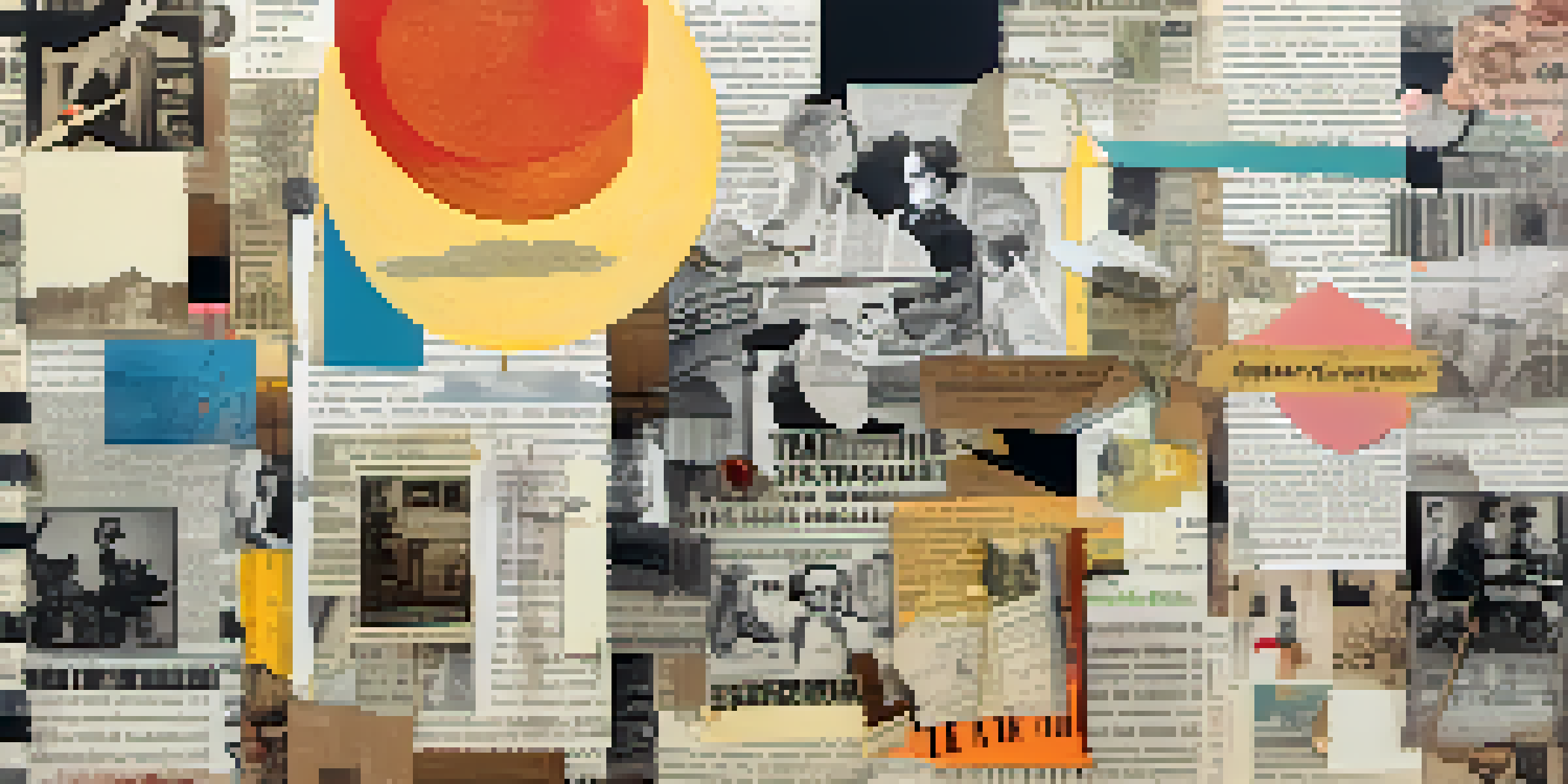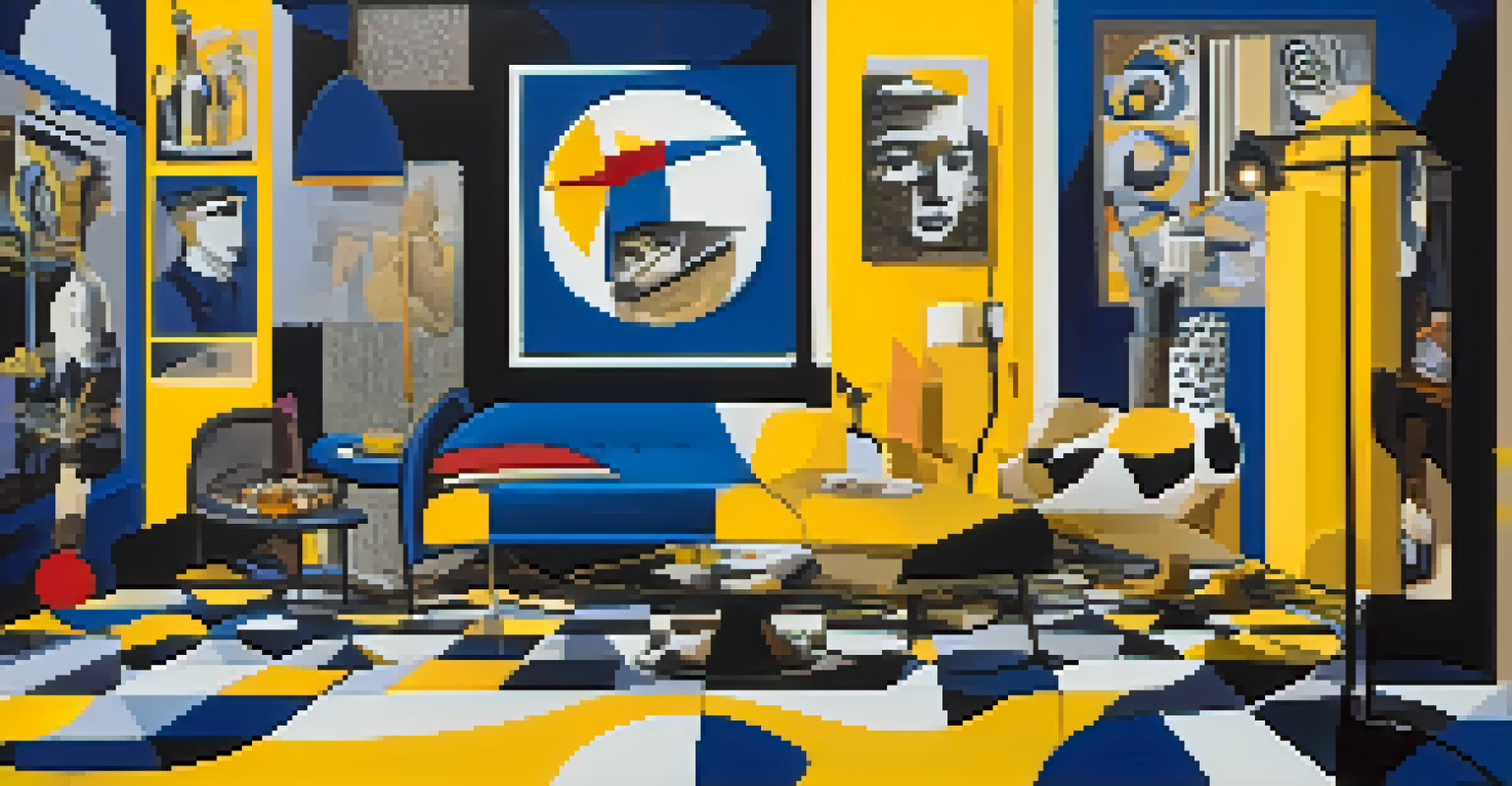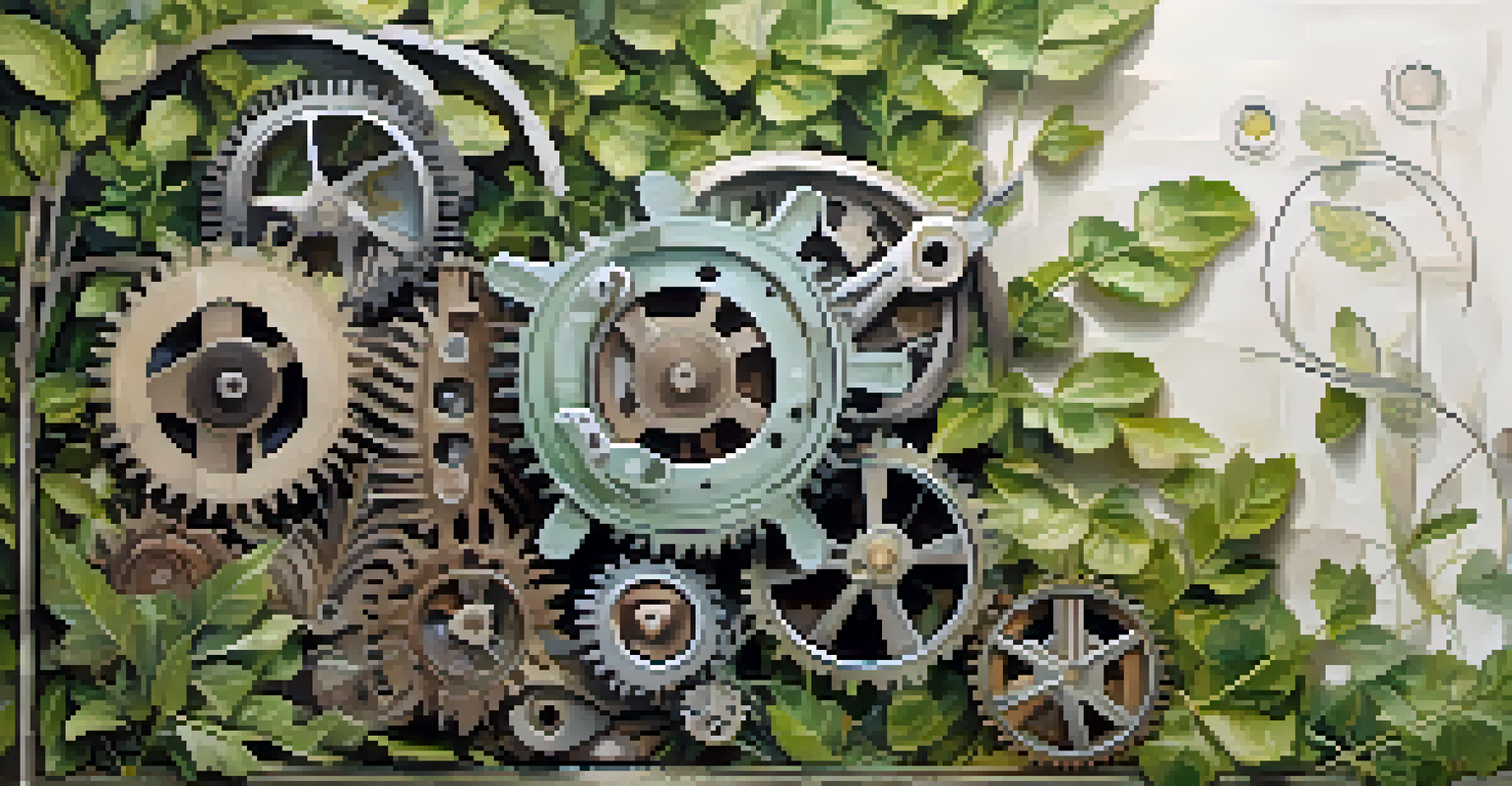The Influence of Dadaism on Modern Collage Painting Styles

Understanding Dadaism: A Brief Overview
Dadaism emerged in the early 20th century as a reaction against the horrors of World War I. Artists sought to challenge conventional aesthetics and societal norms, embracing absurdity and anti-art sentiments. This movement was not limited to visual arts; it also influenced literature, music, and performance, creating a rich tapestry of creative rebellion.
Dada is the only art movement that is not a movement. It is the only art movement that is a non-movement.
At its core, Dadaism questioned the very essence of art, asking what constitutes artistic value. Through its playful yet chaotic approach, it aimed to disrupt the status quo and provoke thought. This ethos of questioning authority and tradition laid the groundwork for many artistic movements that followed, including modern collage.
As we delve deeper into the influence of Dadaism, we can see how its principles resonate within contemporary collage styles. By breaking down barriers between mediums and inviting spontaneity, Dadaism paved the way for artists to explore new forms of expression, making it a pivotal point in art history.
The Techniques of Dada Collage Art
Dada artists employed a variety of innovative techniques that defined their unique style. They often used found objects, newspaper clippings, and photographs to create collages that reflected their disillusionment with the world. This method of recontextualizing existing materials allowed for a new narrative to emerge, showcasing the absurdity of modern life.

One famous example is Hannah Höch, who utilized photomontage to challenge traditional gender roles and societal expectations. Her work not only highlighted the disarray of post-war society but also introduced a feminist perspective that resonated with future generations of artists. This layering of images and ideas became a hallmark of Dada collages.
Dadaism's Artistic Rebellion
Emerging as a response to World War I, Dadaism challenged societal norms and conventional aesthetics through absurdity and anti-art sentiments.
These techniques were revolutionary at the time, and they continue to inspire modern collage artists. By embracing randomness and serendipity, contemporary creators can explore themes of identity, culture, and politics, demonstrating how Dadaism's spirit lives on in today's art landscape.
Dadaism's Philosophical Underpinnings in Collage
The philosophical ideals of Dadaism, particularly its emphasis on anti-art and absurdity, have significantly influenced modern collage. Dada artists believed that art should not serve a purpose or adhere to established norms, a sentiment that resonates with contemporary creators. This liberating perspective allows artists to explore a vast range of ideas without the constraints of traditional aesthetics.
Art is not a mirror held up to reality, but a hammer with which to shape it.
Moreover, the Dadaist approach encourages a playful exploration of materials and concepts. Artists can deconstruct societal norms and expectations, often revealing deeper truths about the human experience. This philosophical foundation fosters an environment where experimentation is celebrated, leading to innovative and thought-provoking art.
As we look at modern collage, we see echoes of Dadaism in the way artists challenge conventional narratives. By embracing the unexpected and the chaotic, they create works that provoke dialogue and reflection, staying true to Dada's legacy of questioning and exploration.
Key Modern Collage Artists Influenced by Dadaism
Several contemporary artists draw direct inspiration from Dadaism, incorporating its principles into their collage work. For instance, artists like Robert Rauschenberg and Richard Hamilton have utilized collage techniques to comment on consumer culture and media saturation. Their works often blend elements of fine art with popular culture, creating a dialogue that reflects Dada's irreverent spirit.
Another notable figure is Kara Walker, whose silhouettes challenge historical narratives and racial stereotypes. Walker's collages utilize stark imagery and juxtaposition to provoke thought, echoing the Dadaist tradition of confronting societal issues. Her work exemplifies how modern artists continue to push boundaries while paying homage to the Dada movement.
Influence on Modern Collage
Dadaism's techniques and philosophies continue to inspire contemporary collage artists, encouraging experimentation and the exploration of identity and culture.
These artists demonstrate that Dadaism's influence is not confined to the past; it remains a significant force in shaping contemporary collage. By embracing absurdity and questioning norms, they create powerful works that resonate with today's audiences, reminding us of the movement's enduring relevance.
The Role of Technology in Modern Collage Art
Technology has revolutionized the way artists create and experience collage art, expanding upon the foundations laid by Dadaism. Digital tools allow for endless possibilities in composition and manipulation, enabling artists to blend traditional techniques with modern innovation. This fusion of old and new creates a dynamic landscape for collage artists to explore.
For example, software like Photoshop provides the ability to layer images, adjust opacity, and experiment with textures, all reminiscent of Dadaist techniques. Artists can now source materials from the internet, creating collages that reflect contemporary issues and global perspectives. This accessibility empowers a new generation of creators to engage with Dadaism's spirit of experimentation.
However, while technology enhances creative possibilities, it also poses questions about authenticity and originality. Just as Dadaists challenged the notion of art, modern artists must navigate the complexities of the digital age, ensuring their work remains true to the rebellious essence of Dadaism while adapting to new mediums.
Dadaism's Legacy in Contemporary Art Movements
The influence of Dadaism extends beyond collage, permeating various modern art movements such as Surrealism and Pop Art. These movements share a common thread of challenging norms and embracing the absurd, demonstrating how Dadaism's legacy continues to shape artistic expression. Artists today draw from this rich history, blending influences to create hybrid forms of art.
For instance, the Surrealists took Dada's emphasis on spontaneity and irrationality, pushing it further into dreamlike realms. Similarly, Pop Art's embrace of consumer culture can be traced back to Dadaism's playful use of everyday materials and imagery. This interconnection illustrates how Dadaism has laid the groundwork for diverse artistic explorations.
Legacy in Contemporary Movements
The principles of Dadaism have significantly influenced various art movements, including Surrealism and Pop Art, by promoting spontaneity and the questioning of norms.
As contemporary artists navigate these influences, they remain mindful of Dadaism's core principles. By embracing chaos and challenging conventions, they contribute to an ongoing dialogue about the role of art in society, ensuring that Dadaism's impact remains vibrant in the modern art scene.
Conclusion: Dadaism's Enduring Influence on Art
In conclusion, Dadaism has left an indelible mark on modern collage painting styles, inspiring artists to explore new avenues of creativity. Its emphasis on absurdity, spontaneity, and the questioning of norms resonates deeply within contemporary art practices. As we continue to witness the evolution of collage, the spirit of Dadaism remains alive and well.
Through the techniques and philosophies pioneered by Dadaists, modern artists are empowered to challenge societal constructs and provoke thought. This legacy highlights the importance of experimentation and play in artistic expression, encouraging creators to push boundaries and redefine what art can be.

Ultimately, Dadaism's influence is a testament to the transformative power of art, reminding us that creativity knows no limits. As we celebrate the vibrant world of collage today, we honor the daring spirit of Dadaism that paved the way for endless possibilities in the realm of art.